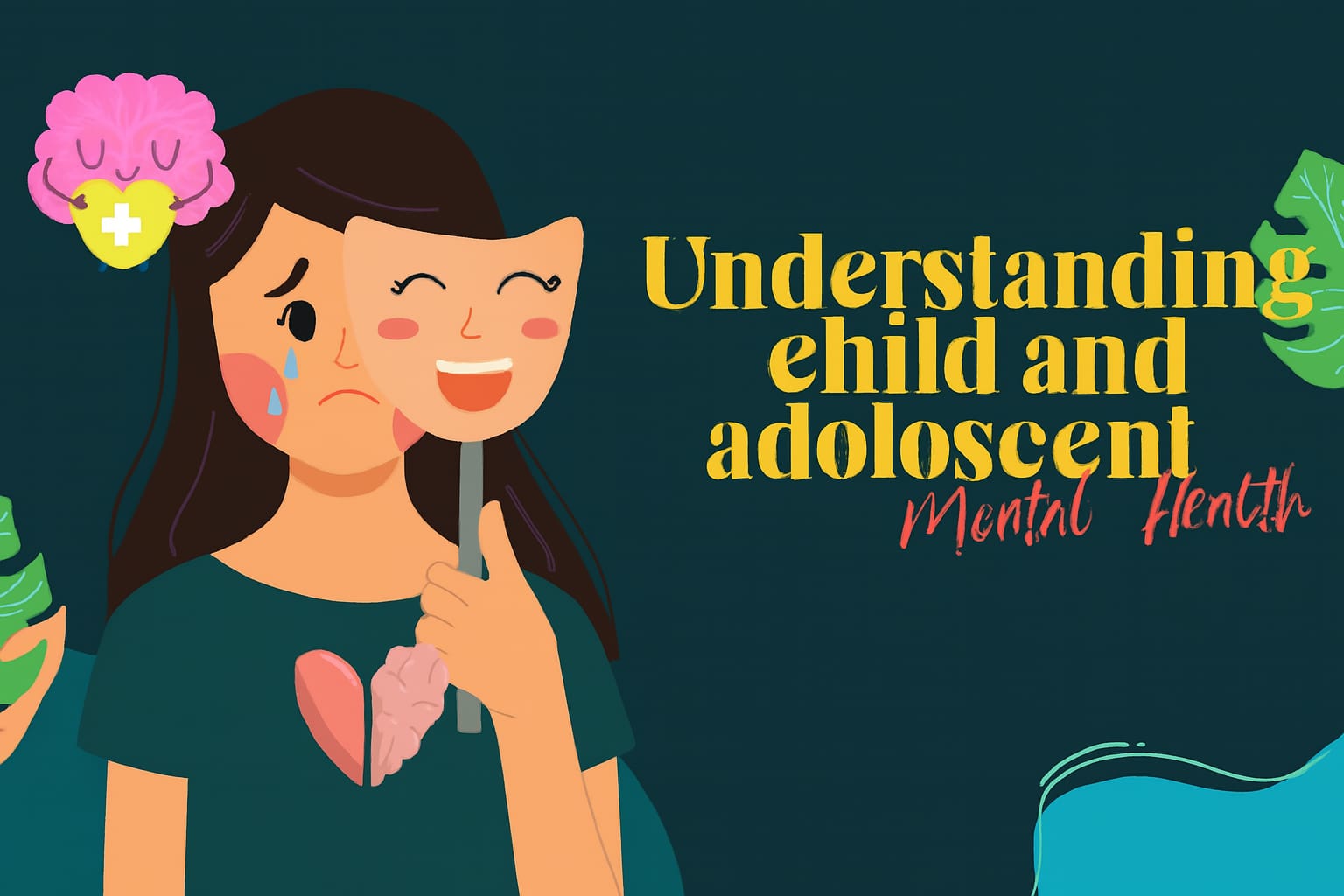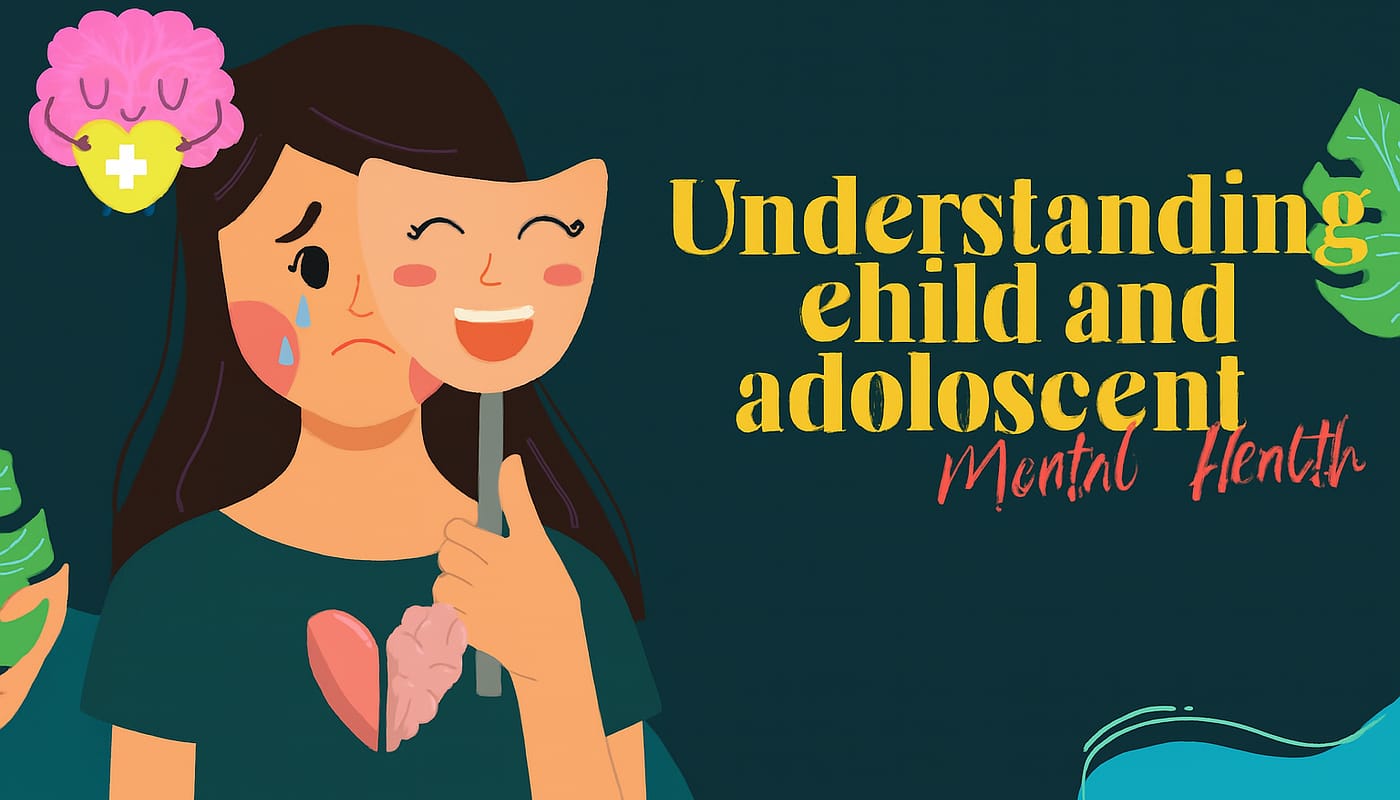
The journey through childhood and adolescence comes with unique experiences and struggles. Our Child and Adolescent Issues service offers information and guidance for parents, caregivers, and young individuals. Discover expert insights to help support emotional development, mental well-being, and healthy communication.
Child and Adolescent Mental Health
Why It Matters
Childhood and adolescence are crucial phases of life for mental health. During these years, the brain undergoes rapid growth and development, and young people acquire essential cognitive, social, and emotional skills that shape their future well-being. These skills are the foundation for healthy adulthood and the ability to take on responsibilities in society.
Adolescence (ages 10–19) is particularly formative, marked by physical, emotional, and social changes. While this stage offers opportunities for growth, it also brings risks. Exposure to poverty, abuse, bullying, violence, or unstable home environments can make adolescents more vulnerable to mental health challenges. Supporting psychological well-being and reducing risk factors during these years not only protects adolescents but also benefits their lifelong mental and physical health.
you may also like https://thrievly.com/sleep-disorders-and-their-effect-on-mental-health/
Determinants of Mental Health
Adolescence is a critical period for building social and emotional habits, such as:
- Maintaining healthy sleep patterns
- Engaging in regular physical activity
- Learning coping strategies, problem-solving, and interpersonal skills
- Managing emotions effectively
A supportive environment at home, in school, and within the community plays a vital role. However, stressors like peer pressure, struggles with sexual identity, increased exposure to technology and media, and rigid gender norms can negatively impact mental health. Harsh parenting, bullying, violence, and socioeconomic challenges also contribute significantly.
Adolescents are particularly vulnerable to sexual violence, which has long-lasting harmful effects on their mental well-being.
Common Mental Health Issues in Children and Adolescents
1. Emotional Disorders
Adolescents with emotional disorders may experience excessive irritability, frustration, anger, or mood swings. They may also report physical symptoms like headaches or stomach aches. These conditions often interfere with school attendance, learning, and relationships, and at their most severe, can lead to suicide.
2. Childhood Behavioral Disorders
Behavioral disorders are the second leading cause of disease burden among 10–14-year-olds. These include:
- ADHD: difficulty paying attention, hyperactivity, and impulsive actions inappropriate for age.
- Conduct Disorder: patterns of aggressive, disruptive, or challenging behavior.
Both conditions can negatively affect education and, if left untreated, may lead to delinquency or criminal behavior.
3. Eating Disorders
Eating disorders often emerge in adolescence and early adulthood, particularly among females. Conditions like anorexia nervosa, bulimia nervosa, and binge eating disorder involve harmful eating behaviors such as extreme dieting or overeating. They are closely linked with depression, anxiety, and substance abuse.
4. Psychosis
Psychotic disorders typically begin in late adolescence or early adulthood. Symptoms such as hallucinations and delusions severely impair daily functioning, education, and social interaction, and often result in stigma.
5. Suicide and Self-Harm
Suicide is the third leading cause of death among adolescents aged 15–19. The majority of adolescent suicides occur in low- and middle-income countries. Risk factors include childhood abuse, harmful alcohol use, lack of mental health services, stigma around seeking help, and easy access to means of suicide.
6. Risk-Taking Behaviors
Adolescence is a time when many risk behaviors emerge, including substance use, unsafe sexual practices, and violence. These behaviors can both stem from poor mental health and worsen it. For example:
- Most smokers have their first cigarette before age 18.
- Risky alcohol use and violence can lead to poor academic performance, crime involvement, injuries, or even death.
you may also like https://thrievly.com/managing-stress-and-anxiety-with-ayurvedic-practices/
Solutions and Support
- Early Identification: Detecting mental health challenges early helps in effective management.
- Counseling and Therapy: Interventions such as cognitive behavioral therapy (CBT) build resilience, improve emotional regulation, and reduce risk-taking behaviors.
- Family and Community Support: Keeping children with family support systems instead of isolating them in institutions promotes better recovery.
- Reducing Stigma: Respecting the dignity of children and adolescents with mental health conditions encourages them to seek help without fear.
- Professional Help: Psychologists, counselors, and therapists—available in person or online—can provide expert support.
Top 10 Most Common Mental Disorders in Adolescents
- Borderline Personality Disorder
- Bipolar Disorder
- Post-Traumatic Stress Disorder (PTSD)
- Psychosis
- Obsessive-Compulsive Disorder (OCD)
- Depression
- Eating Disorders
- Anxiety Disorders
- Conduct Disorder
- Attention-Deficit Hyperactivity Disorder (ADHD)
FAQs on Child and Adolescent Mental Health
1. Why is child and adolescent mental health important?
Childhood and adolescence are critical stages of growth where the brain develops rapidly. Mental health during this time shapes cognitive, emotional, and social skills that influence lifelong well-being, education, relationships, and career success.
2. What are the most common mental health issues in children and adolescents?
Some of the most common issues include:
- Emotional disorders (such as depression and anxiety)
- Behavioral disorders (ADHD and conduct disorder)
- Eating disorders (anorexia, bulimia, binge eating)
- Psychosis
- Suicide and self-harm tendencies
- Risk-taking behaviors like substance abuse or unsafe sexual practices
3. What causes mental health problems in adolescents?
Multiple factors contribute, such as:
- Family environment (harsh parenting, neglect, violence)
- Peer pressure and bullying
- Poverty and socioeconomic challenges
- Media and digital influence
- Childhood trauma, abuse, or neglect
- Genetic and biological factors
4. What are the signs of mental health issues in children and adolescents?
Warning signs may include:
- Sudden changes in mood or behavior
- Social withdrawal and isolation
- Declining school performance or absenteeism
- Risk-taking behaviors (substance use, unsafe sex, violence)
- Eating disturbances (overeating, extreme dieting, purging)
- Talking about hopelessness or self-harm
5. How can parents support their child’s mental health?
Parents can:
- Provide a supportive, loving, and safe environment
- Encourage open communication about feelings
- Set healthy routines for sleep, exercise, and diet
- Monitor online activities and peer interactions
- Seek professional help if early warning signs appear
6. What role does school play in adolescent mental health?
Schools can positively impact mental health by:
- Promoting anti-bullying policies
- Offering counseling services
- Encouraging social-emotional learning (SEL)
- Creating a safe and inclusive environment
- Supporting students with learning or behavioral difficulties
7. How can adolescents cope with stress and emotional challenges?
Healthy coping strategies include:
- Regular exercise and outdoor activities
- Journaling, meditation, or mindfulness
- Talking with friends, parents, or mentors
- Developing problem-solving and decision-making skills
- Seeking professional counseling when needed
8. What treatments are available for child and adolescent mental health problems?
Treatments may include:
- Psychotherapy (counseling, CBT, group therapy)
- Family therapy to strengthen relationships
- School-based interventions
- Medication in severe cases, under professional supervision
- Support groups for peer encouragement
9. Why is suicide prevention important in adolescents?
Suicide is the third leading cause of death among adolescents worldwide. Preventive measures—like reducing stigma, limiting access to harmful substances, building resilience, and providing mental health support—can save lives.
10. When should parents seek professional help for their child?
Parents should seek professional help if their child shows:
- Persistent sadness or withdrawal
- Thoughts or talk about death or self-harm
- Severe mood swings or anger
- Sudden drop in academic performance
- Risk-taking or harmful behaviors
- Signs of eating disorders



